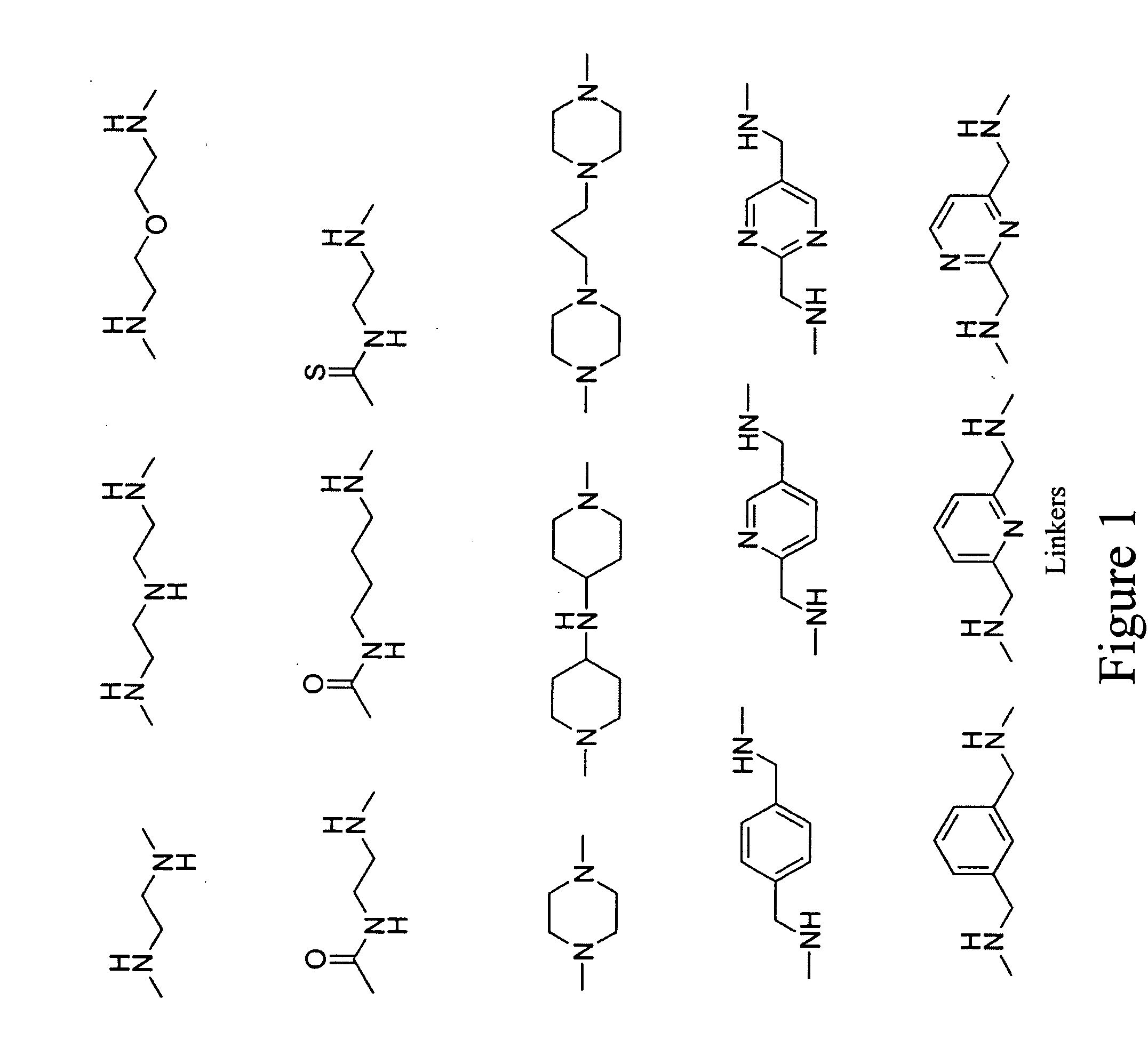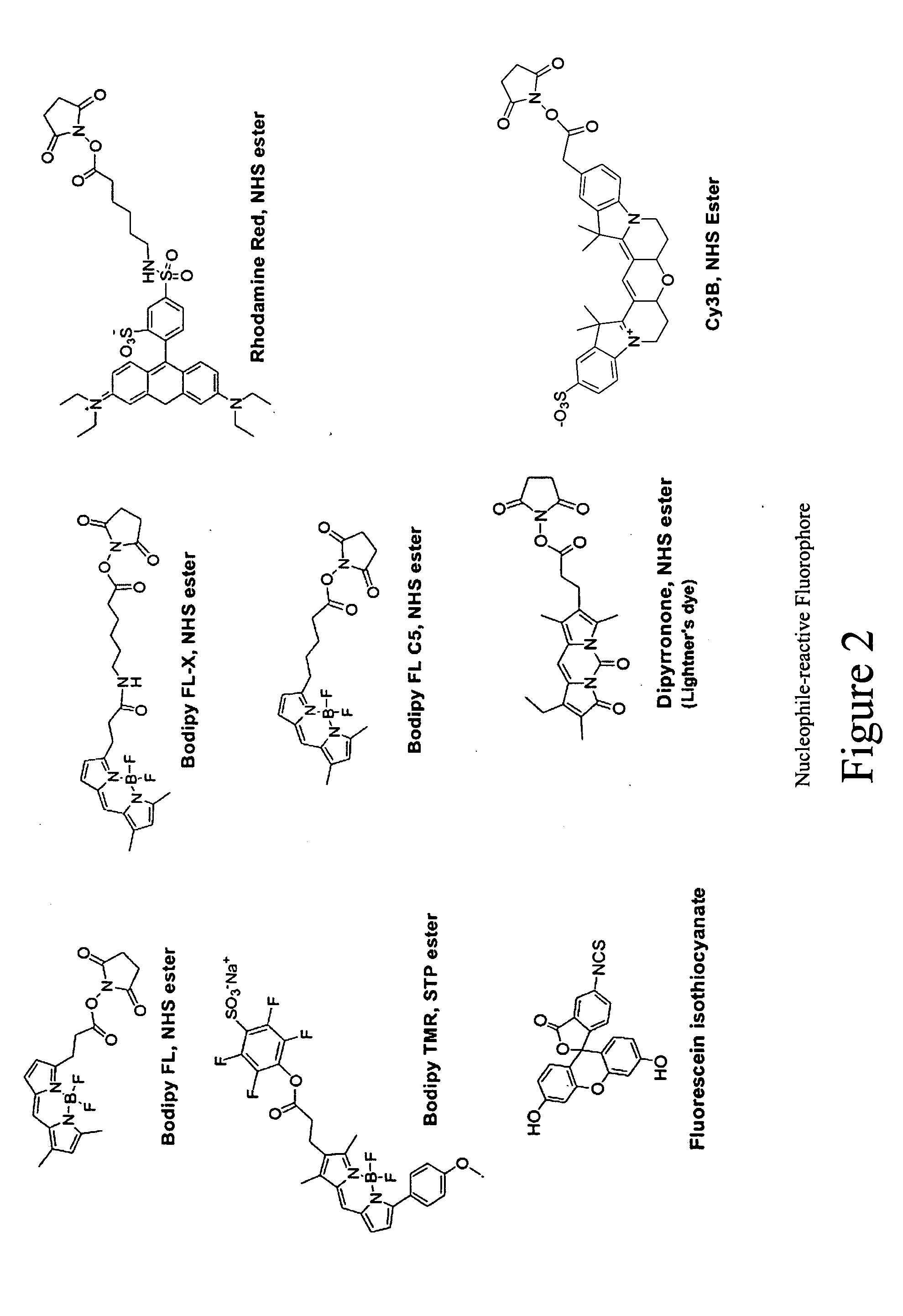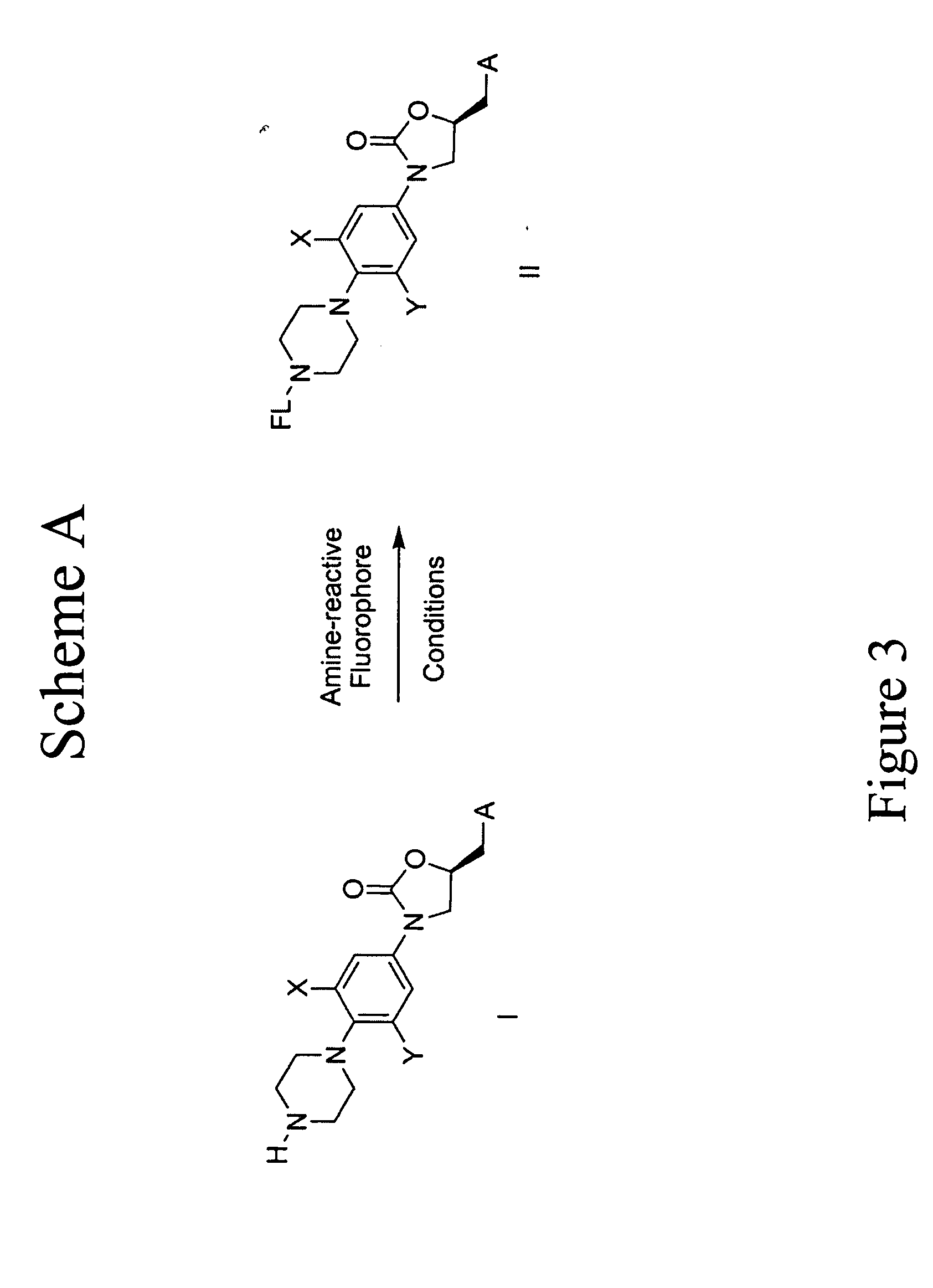Fluorescent probes for ribosomes and method of use
a technology of fluorescent probes and ribosomes, applied in the field of fluorescent probes, can solve the problem of not being able to tell the binding site of inhibitors, and achieve the effect of controlling, treating or reducing the progression, severity or effects of nosocomial or non-nosocomial infections
- Summary
- Abstract
- Description
- Claims
- Application Information
AI Technical Summary
Benefits of technology
Problems solved by technology
Method used
Image
Examples
examples
[0079] The invention may be better understood with reference to the following examples, which are representative of some of the embodiments of the invention, and are not intended to limit the invention.
example i
[0080] Oxazolidinone Probes. One series of probes of this invention are based on oxazolidinones. FIG. 27 illustrates the synthesis to prepare the oxazolidinone core compound 112. FIG. 28 illustrates the synthesis comprising compound 112 being reacted with different activated fluorophors to give a variety of oxazolidinone probes under typical coupling conditions. For example, FIG. 27 shows that (1-benzyl-4-(2-fluoro-4-nitro-phenyl)-piperazine) (“103”) was obtained as follows: Step 1, to a solution of difluoronitrobenzene (“101”) (1.08 mL, 9.8 mmol) and benzylpiperazine (“102”) (1.8 mL, 10.4 mmol) in CH3CN (10 mL) was added triethylamine (1.4 mL, 10.0 mmol). The resulting solution was heated at 90° C. for 3.5 h and then diluted with EtOAc and H2O. The organic phase was separated and washed with H2O, brine and dried over Na2SO4. The solvent was evaporated in vacuum to afford a yellow solid 103 (3.68g). Compound 103: TLC (20% EtOAc / Hexane) Rf=0.40. 1H NMR (400 MHz, CDCl3): δ (ppm) 2.64...
example ii
[0091] Macrolide Probes. Another series of probes of this invention are based on Macrolides. FIG. 29 illustrates the preparation of 9N-fluorescein erythromycylamine (“202”). To a stirred solution of erythromycylamine (Timms, G. H. et al. Tetrahedron Lett., 1971, 195-198. 0.10 mmol) and K2CO3 (28 mg, 0.20 mmol) in acetone-water (2 ml) was added 5-fluorescein isothiocyanate (39 mg, 0.10 mmol). The reaction mixture was stirred at r.t. for 20 hrs and the solvent was evaporated. The residue was purified by column chromatography (silica gel, 1% HOAc in ethyl acetate then methanol) to give an orange solid (28 mg, 25%): MS(M+H)+1124.
[0092]FIG. 29 illustrates the synthesis necessary to prepare the 9-BODIPY-amino-erythromycin{9-(4,4-difluoro-5,7-dimethyl-4-bora-3a,4a-diaza-s-indacene-3-propionyl)-amino-erythromycin} (“203”) as follows: To a solution of 9-amino-erythromycin (“201”) in DMF (0.5 mL) was added BODIPY FL SE (4,4-difluoro-5,7-dimethyl-4-bora-3a,4a-diaza-s-indacene-3-propionic acid...
PUM
| Property | Measurement | Unit |
|---|---|---|
| temperature | aaaaa | aaaaa |
| pH | aaaaa | aaaaa |
| pH | aaaaa | aaaaa |
Abstract
Description
Claims
Application Information
 Login to View More
Login to View More - R&D
- Intellectual Property
- Life Sciences
- Materials
- Tech Scout
- Unparalleled Data Quality
- Higher Quality Content
- 60% Fewer Hallucinations
Browse by: Latest US Patents, China's latest patents, Technical Efficacy Thesaurus, Application Domain, Technology Topic, Popular Technical Reports.
© 2025 PatSnap. All rights reserved.Legal|Privacy policy|Modern Slavery Act Transparency Statement|Sitemap|About US| Contact US: help@patsnap.com



